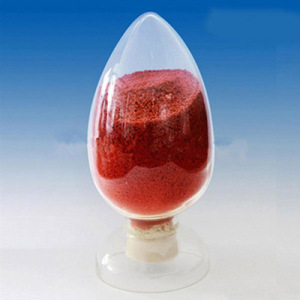Clofentezine 95%Tc/97%Tc/98%Tc 20%Sc/50%Sc 10%Wp 80%Wdg CAS 74115-24-5
-
Price:
Negotiable
- minimum:
- Total supply:
-
Delivery term:
The date of payment from buyers deliver within days
-
seat:
Shandong
-
Validity to:
Long-term effective
-
Last update:
2017-09-26 10:22
-
Browse the number:
112
 Company Profile
Company Profile

By certification [File Integrity]
Contact:Mr. William(Mr.)
Email:
Telephone:
Phone:
Area:Shandong
Address:Shandong
Website: http://kinglead.liyangyacht.com/
Product Details
Common name: Clofentezine
Chemical name: Acaristop; Apollo; Apollo? Apollo SC; Bis(2-chlorophenyl)-1, 2, 4, 5-tetrazine; NC 21314; Panatac; 3, 6-bis(2-chlorophenyl)-1, 2, 4, 5-tetrazine
CAS No: 74115-24-5
Molecular formula: C14H8Cl2N4
Description
1. Molecular weight: 303.1
2. Density: 1.398 g/cm3
3. Melting Point: 182-185oC(lit. )
4. Boiling Point: 504.4oC at 760 mmHg
5. Flash Point: 290.4oC
6. Vapour Pressure: 8.4E-10 mmHg at 25oC
7. Storage temp.: 0-6oC
8. Refractive index: N20/D 1.634(lit. )
Mode of action:
Specific acaricide with contact action, and long residual activity. Inhibits embryo development.
Function:
Control of eggs and young motile stages(but not adults) of Panonychus ulmi and Tetranychus spp. On pome fruit and stone fruit, citrus fruit, nuts, vines, hops, strawberries, cucurbits, cotton, and ornamentals.
Chemical name: Acaristop; Apollo; Apollo? Apollo SC; Bis(2-chlorophenyl)-1, 2, 4, 5-tetrazine; NC 21314; Panatac; 3, 6-bis(2-chlorophenyl)-1, 2, 4, 5-tetrazine
CAS No: 74115-24-5
Molecular formula: C14H8Cl2N4
Description
1. Molecular weight: 303.1
2. Density: 1.398 g/cm3
3. Melting Point: 182-185oC(lit. )
4. Boiling Point: 504.4oC at 760 mmHg
5. Flash Point: 290.4oC
6. Vapour Pressure: 8.4E-10 mmHg at 25oC
7. Storage temp.: 0-6oC
8. Refractive index: N20/D 1.634(lit. )
Mode of action:
Specific acaricide with contact action, and long residual activity. Inhibits embryo development.
Function:
Control of eggs and young motile stages(but not adults) of Panonychus ulmi and Tetranychus spp. On pome fruit and stone fruit, citrus fruit, nuts, vines, hops, strawberries, cucurbits, cotton, and ornamentals.
| Common name | Clofentezine |
| Chemical name | 3,6-bis(2-chlorophenyl)1,2,4,5-teteazine |
| CAS No | 74115-24-5 |
| Molecular formula | C14H8Cl2N4 |
| Description | 1.Molecular weight: 303.1 2.Density:1.398 g/cm3 3.Melting Point:182-185oC(lit.) 4.Boiling Point:504.4oC at 760 mmHg 5.Flash Point:290.4oC 6.Vapour Pressure:8.4E-10 mmHg at 25oC 7.Storage temp.:0-6oC 8.Refractive index:n20/D 1.634(lit.) |
| Mode of action | Specific acaricide with contact action, and long residual activity. Inhibits embryo development. |
| Function | control of eggs and young motile stages(but not adults) of Panonychus ulmi and Tetranychus spp. On pome fruit and stone fruit, citrus fruit, nuts, vines, hops, strawberries, cucurbits, cotton, and ornamentals. |
- Bean & Preparation
- Cereal
- Cocoa, Coffee & Preparation
- Dried Fruit
- Econ-valuable Vegetable
- Edible Fungus & Algae
- Flour & Preparation
- Flower & Gardening Plant
- Fruit & Melon
- Nut & Seed
- Preserved Fruit
- Seed for Sowing
- Tea & Tea Leaf
- Vegetable & Preparation
- Animal Byproducts
- Aquatic & Preparation
- Dairy Products
- Egg & Preparation


